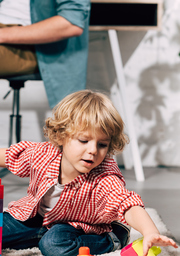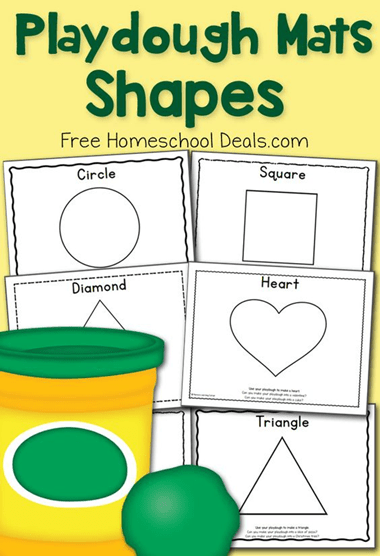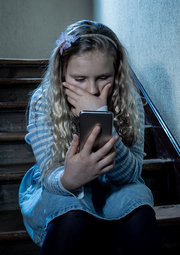How Connetix Toys Inspire Learning Through Play
When it come to early child education, play is a fundamental tool for learning and development. Toys that encourage hands-on exploration, problem-solving, and creativity are a strong foundation for inspiring young minds. It’s essential that children experience learning as a fun endeavor early on.
Connetix toys, a popular choice among parents and educators, have gained recognition for their ability to inspire learning through play. These innovative magnetic tiles offer a wide range of benefits that contribute to a child’s cognitive, social, and emotional growth.
The Power of Magnetic Play
Connetix toys harness the power of magnetic play to captivate children’s attention and encourage exploration. The smooth, rounded edges of the tiles make them safe for small hands to manipulate and create with. The satisfying click of the magnets as they connect and disconnect adds an extra sensory element to playtime. Children can experiment with different shapes, colors, and configurations, allowing their imaginations to run wild.
Building Spatial Awareness and Problem-Solving Skills
One of the key benefits of Connetix toys is their ability to enhance spatial awareness and problem-solving skills. As children build and construct with the magnetic tiles, they develop an understanding of how shapes fit together and how to create stable structures. They learn to visualize and plan their creations, experimenting with balance and symmetry. This hands-on experience lays the foundation for later success in subjects like mathematics, engineering, and architecture.
Encouraging Creativity and Imagination
Connetix toys provide an open-ended play experience that encourages creativity and imagination. Unlike toys with predetermined outcomes, magnetic tiles allow children to create their own designs and structures. They can build towering skyscrapers, colorful patterns, or even three-dimensional animals and vehicles. This freedom to explore and express their ideas fosters a sense of autonomy and boosts self-confidence.
Enhancing Fine Motor Skills
Manipulating the small magnetic tiles helps develop fine motor skills, which are crucial for tasks like writing, buttoning, and using utensils. As children grasp, connect, and disconnect the tiles, they strengthen the small muscles in their hands and fingers. This improved dexterity not only benefits their play but also translates to other areas of their lives.
Promoting Social Interaction and Collaboration
Connetix toys are not only enjoyable for solo play but also encourage social interaction and collaboration. Children can work together to build larger structures, share ideas, and negotiate roles. This cooperative play helps develop communication skills, empathy, and the ability to compromise. It also lays the groundwork for successful teamwork and leadership skills later in life.
Versatility Across Age Groups
One of the remarkable aspects of Connetix toys is their versatility across different age groups. Toddlers can start with simple stacking and color matching, while older children can engage in more complex building challenges. As children grow, they can continue to find new ways to play with and explore the magnetic tiles. This longevity makes Connetix toys a worthwhile investment that can provide years of educational entertainment.
Integrating Connetix Toys into Learning
Parents and educators can easily integrate Connetix toys into various learning activities. For example, children can use the tiles to create patterns and sequences, reinforcing early math concepts. They can also build letter shapes or create story scenes, promoting literacy skills. The possibilities are endless, and the magnetic tiles can be incorporated into lesson plans across multiple subjects.
Where to Find Connetix Toys
For parents and educators interested in bringing the benefits of Connetix toys to their children, there are trusted online retailers that offer a wide selection of magnetic tile sets. These retailers provide high-quality Connetix products, ensuring that children have access to safe and durable Connetix toys that will withstand the test of time. By choosing a reputable source, parents can have peace of mind knowing that they are investing in a toy that will support their child’s learning and development.
The Role of Parents and Educators
While Connetix toys offer numerous benefits, the role of parents and educators in guiding and supporting play is crucial. Adults can engage with children during playtime, asking open-ended questions and encouraging them to explain their creations. They can also provide prompts and challenges to extend the learning experience. By showing interest and enthusiasm, adults foster a positive attitude towards learning and exploration.
Connetix Toys as a Gateway to STEM Education
In the ever-evolving landscape of education, STEM (Science, Technology, Engineering, and Mathematics) subjects have become increasingly crucial. Connetix Toys provide an engaging and accessible way for children to explore these disciplines through hands-on learning.
The magnetic tiles encourage children to experiment with concepts like magnetism, geometry, and spatial relationships. As they build, they learn about the principles of engineering, testing their designs and finding ways to improve them. This practical application of STEM knowledge helps children develop a deeper understanding and appreciation for these subjects.
Furthermore, Connetix Toys can be seamlessly integrated into classroom settings, allowing teachers to incorporate them into their lesson plans. By using these toys, educators can create a more dynamic and engaging learning environment, fostering a love for STEM subjects from an early age.
Promoting Inclusive Play
One of the remarkable aspects of Connetix Toys is their ability to cater to a diverse range of ages and abilities. These toys can be enjoyed by children of all ages, from toddlers to pre-teens, and even by adults. This inclusive nature ensures that families can bond over shared experiences of building and creating together.
Additionally, Connetix Toys are well-suited for children with special needs, as the magnetic tiles can be manipulated with ease, even by those with fine motor challenges. This accessibility promotes inclusivity and ensures that all children can participate in the joy of hands-on learning and play.
Sustainability and Eco-Friendliness
In an era where environmental consciousness is paramount, Connetix Toys stand out for its commitment to sustainability. These toys are crafted from high-quality, durable materials that are designed to last, reduce waste, and promote an eco-friendlier approach to play.
Furthermore, Connetix Toys are recyclable, encouraging children to think about the lifecycle of their toys and the importance of responsible disposal. This emphasis on sustainability helps to instill eco-friendly values in young minds, shaping the next generation of conscious consumers and environmental stewards.
Fostering Family Bonding
Playing with Connetix Toys is not just about individual learning and development; it’s also a valuable tool for family bonding. These toys provide a shared experience that can bring families together, fostering meaningful interactions and cultivating stronger relationships.
As parents or caregivers engage with children in the process of building and creating, they have the opportunity to share in the joy of discovery, problem-solving, and imaginative play. This shared experience can lead to deeper conversations, increased understanding, and lasting memories.
Conclusion
Connetix Toys are more than just playthings; they are powerful tools that inspire learning, creativity, and personal growth. By blending education and entertainment, these magnetic tiles offer a unique and engaging way for children to develop crucial skills while having fun.
From enhancing STEM education to promoting inclusive play and eco-friendliness, Connetix Toys demonstrates a commitment to nurturing the well-rounded development of children. As families embrace the joy of hands-on learning through these remarkable toys, they are not only cultivating lifelong passions but also strengthening the bonds that bring them together.















